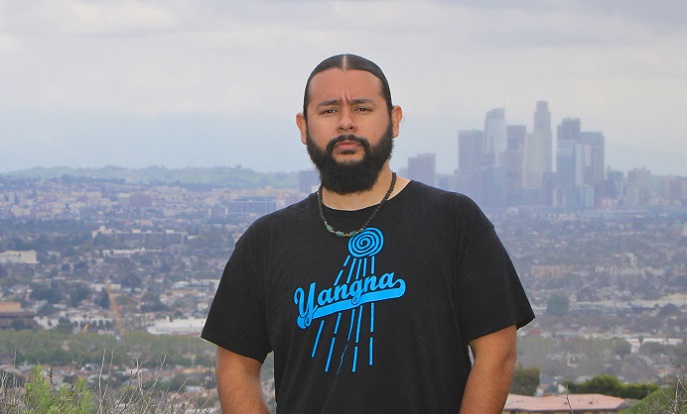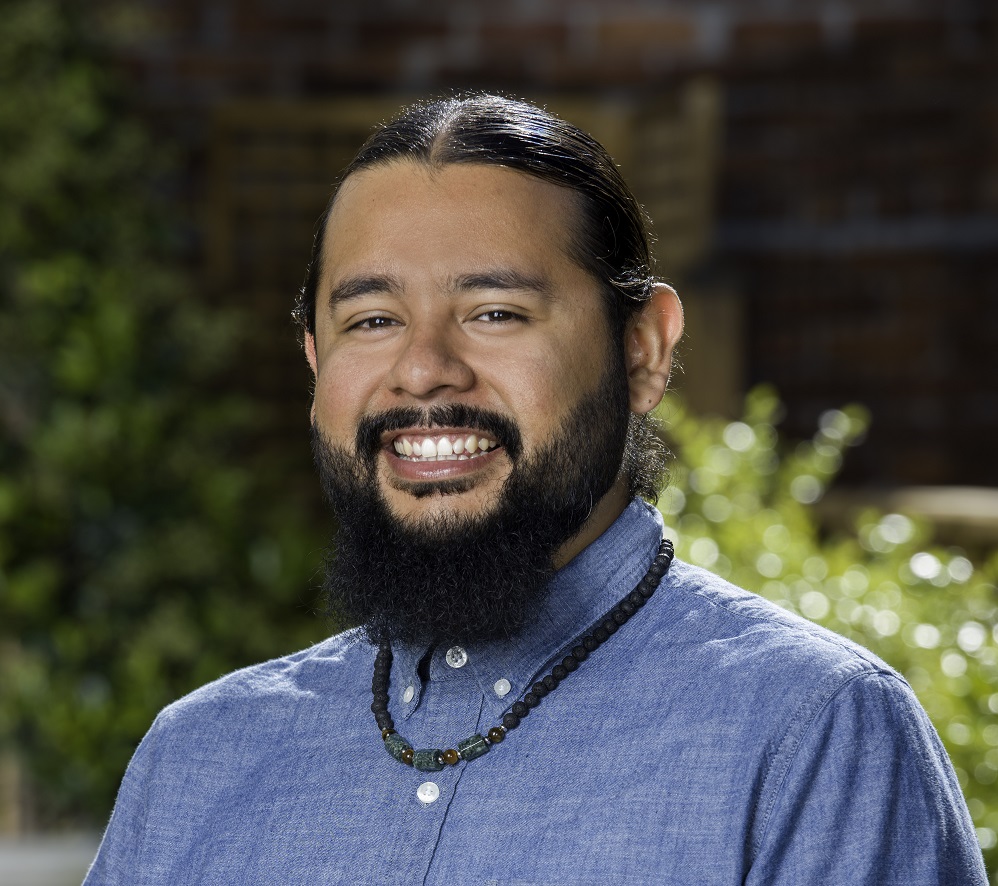The first things one notices on meeting mark! Lopez is his open, accessible demeanor and his big, easy smile. Perhaps these attributes are the result of years spent going door to door as a grassroots community organizer in Eastside Los Angeles, gaining the ear and winning the trust of local residents.
But beware, Lopez says, with a twinkle in his eye: “when I’m smiling is when I can be most dangerous.”
“Dangerous” probably isn’t the adjective Lopez’s neighbors and fellow Eastsiders would use to describe the 31-year-old activist with the bushy black beard and long hair parted in the middle and bound tightly behind his neck. “Passionate” or “committed” are more like it, along with nouns like “protector” or “defender” or even “hero” -- although Lopez would instantly and unequivocally disavow the latter descriptor. Family, community, and cultural continuity and legacy are what motivate Lopez in his fight against the environmental injustice perpetrated against Eastside residents.
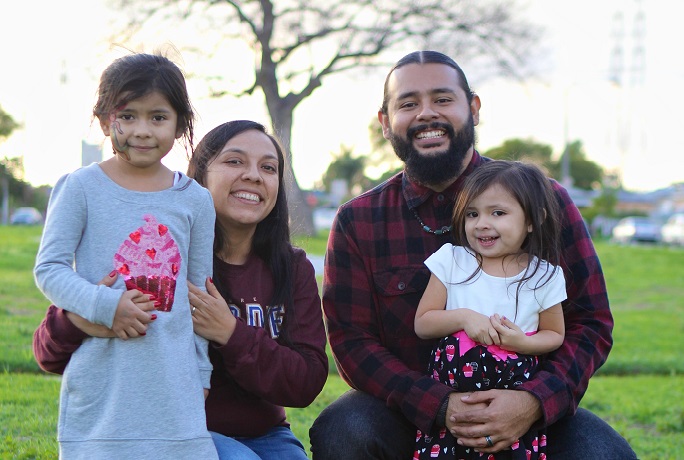
Lopez with his wife, Dr. Flori Boj Lopez, and their daughters Xole and Luna.
On April 24, Lopez’s passion and tenacity were recognized when he was awarded the Goldman Environmental Prize for North America for spearheading a successful campaign (Lopez might prefer the term “struggle”) to close a battery smelter located smack in the heart of the Eastside that was spewing dangerous levels of lead and arsenic pollution into the community. In accepting the award, Lopez characteristically downplayed his own role in the victory, saying, “Nothing is possible with an individual; everything is possible with community.”
Los Angeles’ Eastside -- comprised of L.A.’s easternmost neighborhoods and close-in suburbs like East Los Angeles -- is more than 90 percent Latino, and nearly 30 percent of Eastside residents live below the federal poverty line. It is an extremely close-knit community that owns the distinction of being the largest Latino community in the United States. It is also an area beset with pollution from industries that for decades have located there due to inexpensive land and the predisposition of locals, many of them recently arrived from other countries, not to complain.
But that dynamic has changed, and today the Eastside is increasingly well-organized and politically active, thanks largely thanks to home-grown civic, cultural, and environmental groups like the non-profit East Yard Communities for Environmental Justice (EYCEJ), for which Lopez serves as executive director. (And as an aside, in keeping with Lopez' egalitarian leanings, every employee at EYCEJ, regardless of how lofty or low-ranking their job title, draws the exact same salary.)
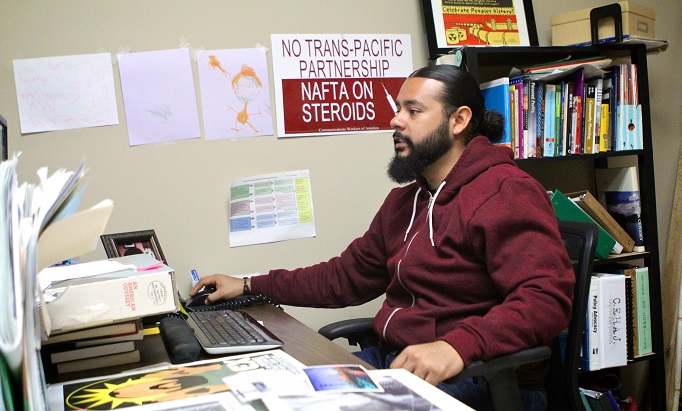
After earning a degree in environmental studies from the University of California, Santa Cruz, Lopez returned to his hometown of East L.A., where his activist grandparents clued him in about the Exide smelter and the harm it was doing to the community. He joined EYCEJ as a member during a time when the organization was heavily pressuring the South Coast Air Quality Management District to lower the lead air emission standard in order to shut down Exide.
The California Department of Toxic Substances Control had found dangerously high lead levels in soil within a 1.7-mile radius of the smelter, yet they responded to EYCEJ's request for residential soil sampling by claiming that local residents didn't want to have their homes sampled. Lopez and EYCEJ community organizer Hugo Lujan immediately launched a door-to-door campaign that brought grassroots-initiated accountability to the issue and raised its visibility, leading to a federal grand jury investigation about the plant's operations a year later, and in March 2015, Georgia-owned Exide announced that it would shut down the smelter.
Not one to rest on his laurels, Lopez followed up by mobilizing Eastside residents to lobby their legislators in Sacramento, including Governor Brown, to fund a cleanup. As a result, last year the State of California appropriated $176 million to clean up some 2,500 Eastside homes that had been found to contain the highest lead levels, and expand lead testing to residents of 10,000 homes located within 1.7 miles of the smelter.
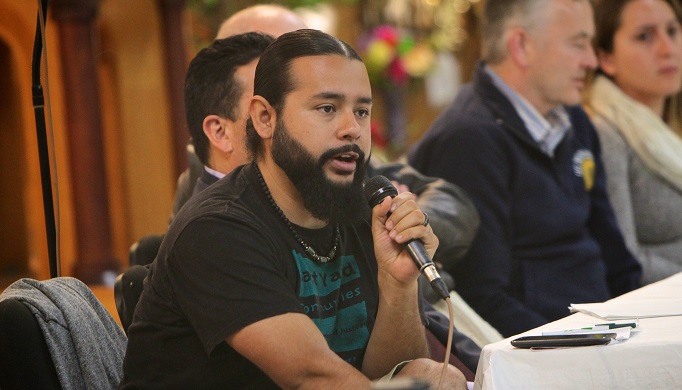
Lopez at a community meeting in Boyle Heights.
Still not satisfied, Lopez noted that contamination could easily extend further out from the smelter, and he pushed for soil testing beyond the 1.7-mile toxic fallout zone, all the while participating in discussions that led to passage of the Lead-Acid Battery Recycling Act of 2016. The Act is expected to generate $30-$32 million annually through a battery fee, a portion of which will go toward cleaning up lead contamination in the Eastside community.
“We’re still cleaning up thousands of homes containing lead pollution from Exide, and continuing the fight against the Tesoro refinery in Long Beach, which is threatening to become the biggest oil refinery on the West Coast by processing tar sands,” Lopez said in accepting the Goldman Prize at San Francisco’s War Memorial Opera House.
The Goldman Environmental Prize honors grassroots environmentalists from the planet’s six inhabited continental regions “for their exceptional courage and commitment.” The Planet sat down for a conversation with Lopez the week before the awards ceremony.
The Planet: Congratulations on being the North American recipient of the Goldman Prize.
Lopez: Thanks. Yeah, it’s a huge honor. But it’s about so much more than just me. I’m the third generation of my family to fight the Exide smelter. My grandparents started back in the 1990s, and it took three generations of our communities to shut it down.
Planet: I understand your grandparents were both activists.
Lopez: Yes, they came to this country from Mexico -- from Ciudad Juarez and Zacatecas -- and being active in your community was just part of how they were raised. I actually wrote my master’s theses about my grandparents, who pointed to the way they were raised in Mexico and the way ethics and principles are transmitted from generation to generation. I am teaching that to my daughters. The way you become part of a community is to contribute to that community. My grandparents shared a saying, “You’re nobody. But nobody is more than you.” This teaches us to be humble, yet dignified.
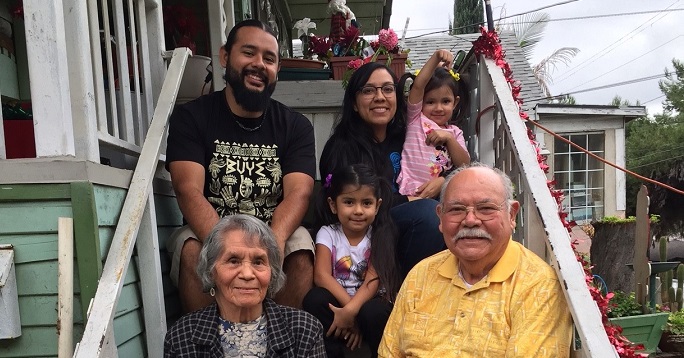
Lopez & family with his grandparents.
Planet: So they were community organizers in East L.A.?
Lopez: Yes. They are co-founders of the Mothers of East LA Santa Isabel. My grandparents took me to protests and marches when I was really young, and family time with my mom included door-to-door canvassing or things like mural painting with other members of the East L.A. community. My earliest memories are in the movement. Building community is our culture. I remember my grandparents telling me that when they moved to the Eastside in the 1950s, there was no Spanish spoken in school, even though the Eastside is so heavily Latino now. It wasn’t allowed. They were yelled at and reprimanded if they spoke Spanish in school. Things have changed now, for sure, our community is stronger, and it is thanks to the generations of Eastsiders that came before us.
Planet: I’m curious to know if living in Santa Cruz came as something of a shock after being raised and spending all your life until then in East L.A.?
Lopez: I’ll tell you the truth; I didn’t even know where Santa Cruz was before I visited. I went there for the first time with a student outreach program organized by MEChA, which stands for the Movemiento Estudiantil Chicanx de Aztlán, which translates to Chicanx Student Movement of Aztlán. Visiting Santa Cruz with MEChA was a great experience. I love camping, and that's what it felt like being in the forest on campus. It wasn't until I returned to start Fall my first year that I realized I’d met most of the students of color on campus, though. [Smiles] The Eastside of L.A. is so heavily Latino. The transition to Santa Cruz was kind of shocking, to tell you the truth, but I developed skills and tools because I stayed active in community organizing on campus, from advocating for service workers’ rights to pushing for resources for student of color recruitment and retention.
Planet: And once you graduated, you returned straight to the Eastside?
Lopez: Yes, and it was my grandparents who told me about the Exide smelter. I was visiting my grandmother when she gave me a public notice that had just arrived in the mail, about an upcoming agency meeting about the smelter. It had increased production -- and pollution -- after Exide took over the plant in 2000. My grandmother handed me the notice and said, “You know, Exide is still right here.” After this I became a member of East Yard Communities for Environmental Justice, who was already working to reduce the emissions standard for facilities like Exide. It was through EYCEJ that we did door-to-door outreach and really built a movement against Exide and for cleanup. And the rest of the story you know, right?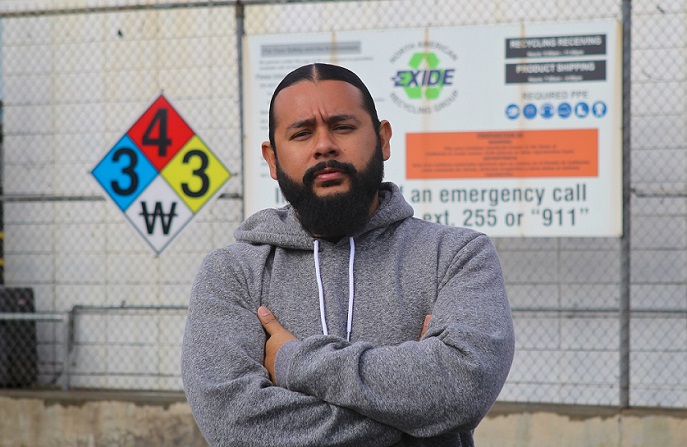
Lopez in front of the Exide plant.
Planet: Yes, but I’d be interested to hear your thoughts on environmental justice -- or environmental injustice, depending how you look at it.
Lopez: Well, environmental injustice, or environmental racism, is the way polluting facilities are so often sited in or right next to low-income communities of color, who then disproportionately bear the brunt of toxic pollution of the air, water, land and our bodies that leads to increased incidences of things like asthma and even cancer. The Exide fight taught us that environmental racism is then upheld by elected officials and agencies not responding to the toxic disasters that occur in our communities.The California Department of Toxic Substances Control basically allowed Exide to operate without a permit. And then even once we managed to get the media to report on the Exide disaster, environmental racism was perpetuated by the governor choosing not to pay attention. We asked for a meeting with the governor, but he declined, so we organized a protest at a casino where he was doing a ribbon-cutting. After that we kept the pressure on and he was finally willing to work with us and support the allocation of funds to help clean up polluted Eastside and Southeast LA soil and homes and do more testing.
Planet: What does winning the Goldman Prize mean to you, and what do you think it will mean to your community?
Lopez: For me, winning the Goldman is significant and tremendously uplifting. But it’s not really about me so much as it’s about multiple generations in our communities and thousands of community members and allies stepping up to challenge injustice in our communities. I hope other communities learn about our struggle through the prize. My hope is that when people learn about this story that they’ll see they can make a difference in their communities. It doesn’t start with outside groups coming in -- it starts in the community.
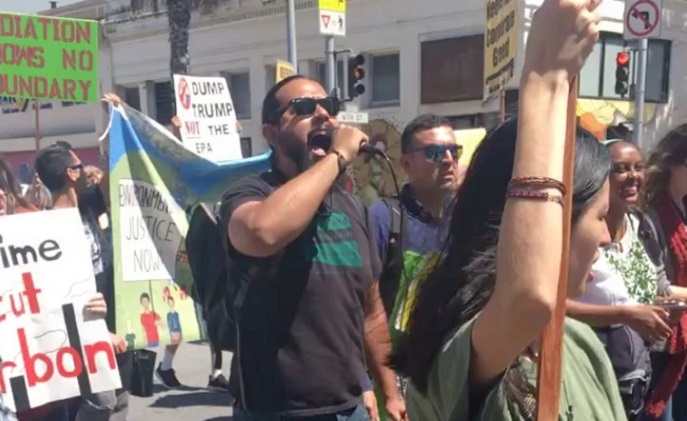
Lopez marching from the U.S. EPA's office to the federal building in San Francisco, organized by the California Environmental Justice Coalition the week before the Goldman Prize ceremony.
Planet: Would you say you’re optimistic about the future? Are you hopeful?
Lopez: More than being hopeful, I’d say I’m relentless. [Smiles] Even if I don’t know I’m going to win, I fight. Our communities aren't going anywhere and neither is our fight.
Planet: What would you tell young people who want to make a difference in their communities and in the broader world beyond?
Lopez: I’d tell them, “it starts with you.” If you can answer these three fundamental questions: 1) What is it? 2) How does it affect us? 3) What can we do about it?, then you can build a movement in your community, no matter where you are at. And I’d say to youth, even if you feel alone as the movement builds inside you -- whether you know it or not -- or if you’re already building movement with your squad, the struggle we start today is a struggle our babies don’t have to start tomorrow.
